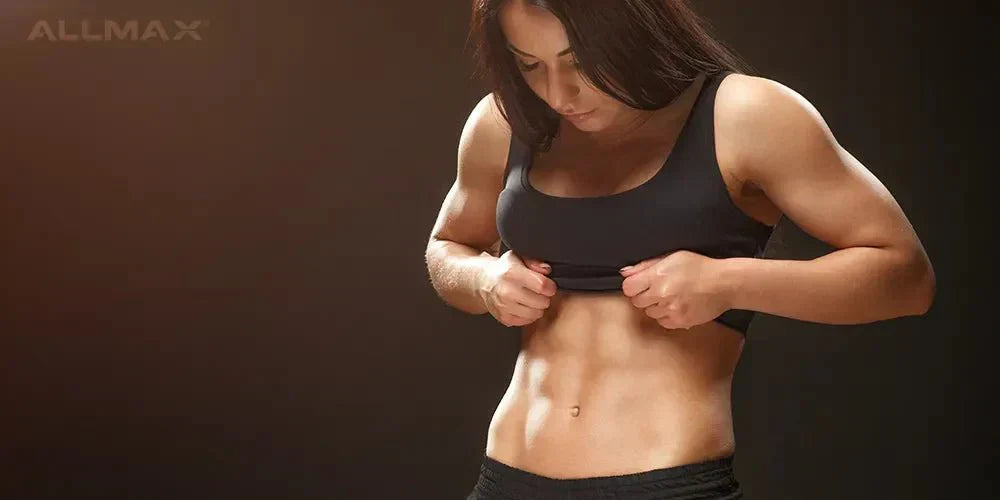You have been training your upper body every week in the gym. You think you have tried everything, but there is still something missing for the physique you want. The secret could be that you have been neglecting your rear delts. The rear delt is a small muscle that makes a big difference in a defined shoulder. Rear delt exercises are the final puzzle piece to the full, defined back that you are working for. Keep reading through this guide to building your rear deltoids and learn the secrets you need for your bodybuilding journey.
What Are Rear Delts?
The deltoid muscle is the primary muscle that forms your shoulder and part of your upper back. It consists of three distinct heads:
- Anterior deltoid (front)
- Lateral deltoid (side)
- Posterior deltoid (rear delt)
The rear delt originates at the shoulder blade (scapula) and connects to the top of the humerus (upper arm bone). Although it’s a relatively small muscle, it plays a crucial role in both shoulder function and posture.
Primary functions of the rear delt:
- Moves the arm laterally and away from the body (abduction)
- Enables horizontal abduction (moving the arm backward)
- Assists in internal rotation of the shoulder
- Helps lift the elbow to the side
- Stabilizes the shoulder joint during pulling movements
- Supports good posture, especially in seated or forward-leaning positions
- Prevents shoulder impingement and associated pain
Common symptoms of weak or underdeveloped rear delts:
- Rounded shoulders and poor posture
- Lack of definition in the upper back
- Instability during pressing or pulling exercises
- Greater risk of shoulder injuries, especially to the rotator cuff
- Imbalances that lead to limited shoulder mobility or discomfort during lifts like rows or presses
Modern lifestyles, dominated by sitting and forward-focused movement (e.g., computer and phone use), can cause rear delts to become inactive or underdeveloped. Incorporating targeted rear delt exercises helps restore muscular balance, improve posture, and enhance upper body strength and aesthetics.
How to Develop the Rear Delts?
The primary way to develop your rear delt is to do more exercises targeting the muscle. Still, we will continue to dive deeper into the specific ways to target and train the posterior deltoid. Developing your rear delts are a combination of training the shoulders specifically during your training split, using hypertrophy training methods, and using various rear delt-specific shoulder exercises to create a routine that will build a well-defined shoulder.
Benefits of Rear Delt Exercises
Training your rear delts is one of the most overlooked moves in building a powerful, balanced physique. It’s not just about the rear view, rear delts play a major role in how you train, feel, and look overall. Here’s what dialed-in rear delt work brings to the table:
- Improved Shoulder Health – Strong rear delts stabilize the shoulder joint, reducing the risk of injury during pressing and overhead movements.
- Better Posture – In a world of rounded shoulders and desk slouching, rear delt training pulls everything back into alignment.
- More Pulling Power – Whether it's rows, pull-ups, or deadlifts, rear delts add strength and control to every pull.
- Balanced Shoulder Development – Most lifters overtrain the front delts—rear delt work evens things out for that full, 3D look.
- Aesthetic Upper Back – Developed rear delts complete the upper back, adding width and definition that pops onstage or under a shirt.
Build them right, and rear delts do more than show - they perform.
Training Splits to Target the Shoulders
Training splits help focus on specific muscle groups for each session, so be sure your training split include two days of back or shoulder work. When you work the shoulders more within your training week, you will have more development of the shoulders. Keep the training sessions to only two per week, though, because overtraining of the shoulder muscles group can cause just as much harm to the shoulder and rotator cuff as not training the muscles at all. It is a fine line to walk between undertraining and overtraining that takes time to develop.
Use Hypertrophy Repetition Schemes
Hypertrophy is the building of muscle to give it more size. There are rep schemes that specifically cause the worked muscles to grow. The commonly used rep scheme is to do 3 or 4 sets of 12 reps to 15 reps.
How to Work Posterior Deltoid? Best Rear Delt Exercises
If you're serious about balanced shoulder development, strong posture, and bulletproof upper-back stability, it’s time to stop ignoring your rear delts. The posterior deltoid often gets overshadowed by pressing movements, but it's absolutely essential for pulling strength, joint health, and that full, 3D shoulder look. Below are five highly effective rear delt exercises that will help you build strength, improve mobility, and prevent injury.
1. Rows
Rowing variations are some of the best compound movements for targeting the entire back—and when executed with proper form, they do serious work on the rear delts.
-
Bent-over rows emphasize the entire posterior chain, with the rear delts firing hard during the pulling motion.
-
Upright rows engage the entire shoulder complex. Here, rear delts help stabilize the shoulder as the weight is pulled upward.
How to Perform:
- Begin with arms fully extended and back engaged - think “shoulders down and back.”
- For bent-over rows or seated rows, pull the weight toward the middle of your chest, keeping elbows tight.
- For upright rows, pull the weight vertically along the body, stopping near the upper chest. Keep wrists flat and avoid flaring elbows too far.
2. Face Pulls
This is a go-to isolation movement for targeting the rear delts. The high elbow position reduces involvement from the lats and brings the rear deltoids into focus.
How to Perform:
- Use a rope on a cable machine or a resistance band.
- Take a staggered stance for balance, arms extended in front of you.
- Grip the handles with your palms facing down (thumbs toward the ground).
- Pull the rope toward your face, flaring your elbows out so they stay in line with your shoulders.
- Squeeze at the top before slowly returning to the start.
3. Lateral Raises (Rear-Focused)
While lateral raises primarily hit the side delts, the rear delts assist in stabilizing the shoulder throughout the movement - especially if done with strict form.
How to Perform:
- Start with dumbbells at your sides, palms facing inward.
- Raise the arms out to the sides, maintaining a slight bend in the elbows and keeping the wrists straight.
- Don’t swing the weights—use a controlled tempo.
- Think about lifting with your elbows, not your hands, to engage the rear delts more.
4. Rear Delt Machine (Reverse Pec Deck)
This machine is designed specifically to isolate and train the rear delts. It mimics the motion of a reverse fly while keeping you locked into a safe range of motion.
How to Perform:
- Sit facing the machine, chest against the pad.
- Grab the handles with a neutral grip (palms facing each other).
- Initiate the movement by pulling your shoulders down and back.
- Open your arms in a wide arc until your wrists are in line with your torso.
- Slowly return to the starting position without letting the weight pull you forward.
5. Pull-Ups & Lat Pulldowns
While these are primarily back exercises, the rear delts play a critical stabilizing role—especially during the eccentric (lowering) portion of each rep.
How to Perform:
- For pull-ups, use an overhand grip and avoid kipping or swinging. If full pull-ups are too challenging, use resistance bands or an assisted pull-up machine.
- For lat pulldowns, avoid using momentum. Choose a weight that allows for strict form.
- Use different grips (wide, neutral) to shift the emphasis and keep rear delts involved.
Tip: Even though the rear delts aren't the main mover in these exercises, the stabilizing role they play strengthens neuromuscular control and supports shoulder integrity. Over time, this improves mind-muscle connection and leads to better overall development.
Add Variety to Your Shoulder Workouts
Doing the same shoulder workouts week after week will cause your body to get used to what to expect from a workout. Our bodies respond well to training that offers variety, but this does not require you to develop a new movement or workout routine completely. Adding variety to your workouts can be as simple as using dumbbells instead of a barbell or a machine. If you notice your progress begins to slow, try adding new movements and equipment, such as a landmine like we discuss in this article.
Rear Delt Workout: Putting It All Together
Finding the training that works for your body is a process, but you will find what works for you to develop your rear delts best with time and effort. The rear delt is a minor muscle that plays a significant role in your entire shoulder joint. The development of the rear delt through your training will provide a fully defined physique and protection from shoulder impingement and pain. For more information about how to train your body to look and perform its best, read through our training articles and find what will fit your routine and body the best!



